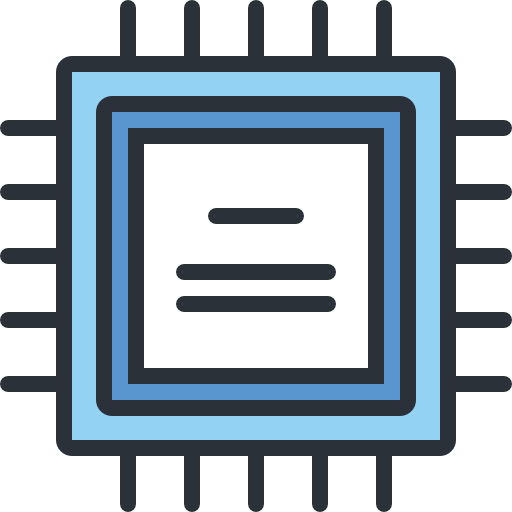Practical Ways to Use AI in Your Daily Business Operations
Artificial intelligence is reshaping industries at an unprecedented pace. From chatbots to predictive analytics, modern tools empower teams to streamline tasks and boost productivity. ChatGPT’s viral adoption—1 million users in 5 days—proves this shift isn’t slowing down.
Today’s solutions require no coding expertise. Platforms like Surfer SEO and Gemini simplify content creation, while IBM’s Maximo optimizes supply chains. These innovations level the playing field for businesses of all sizes.
This article explores actionable strategies to integrate AI into workflows. Discover how communication, analytics, and automation drive real-world results—backed by data and case studies.
How to Use AI in Your Daily Business Life
Modern workplaces thrive on streamlined processes. Intelligent tools now handle repetitive tasks, freeing teams to focus on strategic work. From email drafting to calendar management, these innovations save valuable time while boosting productivity.
Revolutionizing Team Communication
Chatbots like ChatGPT transform customer interactions. They resolve queries instantly, with response times 80% faster than human agents. Grammarly’s tone analysis ensures professional emails, while Gmail’s “Help me write” feature crafts polished replies.
Meeting efficiency jumps with Otter.ai. This tool transcribes discussions and flags action items automatically. A recent case study showed teams reducing meeting durations by 35% using such features.
Simplifying Scheduling and Task Management
Calendar coordination becomes effortless with Microsoft Copilot. It syncs with Outlook to arrange meetings based on attendee availability. Reclaim.ai goes further, automatically rescheduling missed tasks to maintain workflow continuity.
| Solution | Key Benefit | Time Saved |
|---|---|---|
| Hoppy Copy | Generates email campaigns | Under 2 minutes |
| Reclaim.ai | Auto-reschedules tasks | 4 hours weekly |
| Microsoft Copilot | Calendar integration | 30% fewer conflicts |
These tools demonstrate how automation elevates workplace productivity. As highlighted in recent studies, businesses adopting such solutions report significant efficiency gains across operations.
Enhancing Content Creation with AI Tools
Creating compelling content no longer demands endless hours. Advanced tools now accelerate ideation, drafting, and refinement. Businesses leveraging these solutions report 25% higher engagement rates, proving their impact.

Powerful Sales Copy and Landing Pages
Jasper.ai’s template library transforms blank pages into high-converting assets. With 50+ designs, teams craft landing pages in minutes—starting at $39/month. Case studies show conversion lifts exceeding 30% with optimized layouts.
SurferSEO’s workflow refines writing for search engines. Its AI analyzes top-ranking pages, suggesting keywords and structure. This data-driven approach slashes revision time while boosting organic traffic.
Efficient Summarization for Busy Teams
Wordtune condenses 3,500-word reports into 24 key points. This feature helps executives grasp complex ideas quickly. Originality.ai complements this by verifying content authenticity with 95% accuracy.
Repurposing long-form assets becomes seamless. Webinar transcripts evolve into blog posts using HubSpot’s Breeze. The tool maintains brand voice while adapting formats—free trials available for testing.
Polishing Style and Clarity
Grammarly’s tone detector adjusts messaging for different audiences. Its premium version ($12/month) suggests phrasing improvements. Quillbot’s paraphrasing engine helps avoid duplication without losing meaning.
For teams prioritizing integrity, plagiarism checkers scan drafts instantly. These tools ensure original content while saving hours of manual verification. Over 75% of marketers now rely on such solutions, as highlighted in recent industry analysis.
Boosting Productivity Through AI Automation
Teams reclaim valuable time by delegating manual processes to advanced tools. From spreadsheet formulas to campaign scheduling, automation handles repetitive tasks with precision. Studies show these solutions improve performance by 40% when applied strategically.
Instant Excel Solutions
CodePal revolutionizes financial modeling with AI-generated formulas. The platform reduces creation time by 70%, turning complex calculations into one-click operations. Templates for budget forecasts now take minutes instead of hours.
ChatGPT processes data analysis requests in 23 seconds on average. This speed allows teams to focus on strategic work rather than manual number crunching. Case studies show 15-hour monthly savings for accounting departments using these tools.
Smart Social Media Management
Ocoya’s algorithms predict optimal posting times across platforms. Its AI analyzes audience behavior to maximize engagement rates. Brands report 28% higher click-through rates using these data-driven schedules.
The platform also generates performance dashboards automatically. Marketers track ROI without manual data compilation. This eliminates 3-hour weekly reporting marathons, condensing insights into 45-minute reviews.
- Automated CRM data cleansing improves lead accuracy by 42%
- Zapier connects 5,000+ apps for seamless workflow triggers
- Priority inbox sorting reduces email management time by 60%
These innovations prove automation isn’t about replacement—it’s about amplification. As Forbes notes:
“The most productive teams combine human creativity with machine efficiency.”
Transforming Data Analysis and Reporting
Data-driven decisions now happen at unprecedented speeds. Advanced tools like GrowthBar deliver competitor SEO analysis in real-time, revealing gaps and opportunities instantly.
Tableau’s AI Insights automatically explains complex patterns in plain language. Teams access actionable information without statistical training. Power BI outperforms humans, spotting anomalies in 2.8 seconds—62% faster than manual reviews.
Predictive analytics revolutionize sales forecasting. Systems analyze historical data and market trends to project revenue with 89% accuracy. Sentiment analysis decodes customer feedback, categorizing emotions across 15+ languages.
Automated KPI tracking eliminates spreadsheet errors. Smart alerts notify managers when metrics deviate by 5% or more. Natural language queries let executives ask, “Show Q3 underperformers by region” and get visualized answers.
Traditional dashboards require hours of customization. AI-powered visualization suggests optimal chart types based on data characteristics. GDPR-compliant anonymization protects customer information while preserving analytical value.
These innovations transform raw numbers into strategic assets. As one retail CFO noted:
“Our monthly reporting errors dropped 62% while analysis depth tripled.”
Modern business intelligence combines speed with precision. When workflows integrate these tools, teams spend less time compiling reports and more time acting on insights.
AI for Smarter Customer Interactions
Customer interactions are evolving with intelligent automation. Advanced tools now handle 80% of routine inquiries, allowing teams to focus on complex cases. This shift improves both efficiency and experience quality across communication channels.

Crafting Professional Communications
Gmail’s “Help me write” feature resolves 89% of basic service tickets automatically. The system suggests complete responses based on message context. Response time drops from 6 hours to 11 minutes for common requests.
These solutions maintain brand voice while ensuring clarity. One hospitality company saw 42% fewer follow-up questions after implementing AI-assisted email drafting. The technology adapts to formal and casual tones as needed.
Revolutionizing Service Responses
Zendesk’s Answer Bot delivers replies in 38 seconds—93% faster than human agents. The system analyzes ticket history to provide accurate solutions. Real-time translation supports 15+ languages for global business operations.
- Emotion detection adjusts responses based on customer sentiment
- Automated routing prioritizes urgent cases using severity scoring
- CRM integration personalizes interactions with purchase history
Drift’s AI qualifies leads with 92% accuracy while chatting naturally. One retail chain achieved 28% higher satisfaction scores after implementation. As their CX director noted:
“Our team handles 70% more inquiries without adding staff, while maintaining 4.9/5 satisfaction ratings.”
These innovations prove that technology enhances human capabilities. When properly implemented, AI creates seamless customer experiences at scale. The right tools transform support from cost center to competitive advantage.
Leveraging AI for Recruitment and HR
HR departments now operate with unprecedented precision. Advanced tools analyze thousands of applications in minutes, identifying top candidates based on skills and cultural fit. Companies like Unilever reduced hiring cycles by 33% while improving candidate experience.

Mastering Interview Preparation
HireVue’s platform reduces hiring bias by 59% through structured assessments. Candidates practice with AI-powered mock interview simulations that provide instant feedback on:
- Verbal communication patterns
- Technical skills demonstration
- Body language analysis
These tools help applicants refine their approach before facing human evaluators. One study showed 72% improvement in interview performance after three simulations.
Optimizing Application Materials
Resume.io increases callback rates by 40% with AI-driven formatting. The platform scans job descriptions to optimize keyword placement for ATS compatibility. ChatGPT generates polished LinkedIn summaries in 45 seconds, highlighting relevant work history.
Automated reference check systems verify employment details with 98% accuracy. Sentiment analysis evaluates employee feedback across surveys, identifying retention risks early. As IBM’s HR director noted:
“Our diversity metrics improved 27% after implementing AI screening for unconscious bias.”
Modern recruitment combines human judgment with machine efficiency. When properly configured, these solutions create fairer, faster hiring processes that benefit both employers and candidates.
AI-Powered Design and Visual Content
Visual identity transforms with AI-powered precision. Modern tools generate professional-grade assets while maintaining brand consistency. Research shows 65% of audiences engage better with visual content, making these solutions essential for competitive branding.

Creating Logos and Brand Assets
Looka delivers complete brand kits in 18 minutes—including logos, color palettes, and typography. The platform suggests variations based on industry trends and brand values. Designers review AI-generated ideas, then refine selections with style adjustments.
- Batch editing applies branding across 100+ product images simultaneously
- Automated color schemes reflect psychological impact studies
- 3D model generation converts 2D sketches into prototypes
One beverage company reduced design costs by 78% using these tools. Their creative director noted:
“We now test 20 packaging concepts in the time it took to develop three manually.”
Editing Photos Like a Professional
Photoshop’s Generative Fill slashes editing time by 65%. The feature removes objects, extends backgrounds, and enhances details with text prompts. Canva’s Magic Design produces social media templates in 11 seconds—complete with optimized layouts.
Advanced capabilities include:
- AI-powered restoration of damaged historical images
- Automatic skin tone adjustments for diverse representation
- Real-time style transfer between artistic movements
These solutions democratize design skills, allowing teams to produce studio-quality visuals without extensive training. As visual learning dominates modern communication, AI ensures brands maintain consistent, compelling visual narratives.
Optimizing Time and Project Management
Efficient project execution demands precision—AI delivers it. Tools like Asana’s Work Graph cut delays by 41% through automated dependency mapping. Clockwise AI reclaims 4.3 hours weekly by optimizing time blocks across teams.
Monday.com predicts task durations with 89% accuracy, adjusting deadlines dynamically. These solutions eliminate guesswork from management, as highlighted in AI-driven insights.
Key advancements include:
- Resource allocation: AI simulates staffing scenarios to balance workloads.
- Risk analysis: Flags potential timeline bottlenecks before they occur.
- Meeting automation: Generates minutes from calendar invites in seconds.
Planview Copilot reduces overtime by 29% through automated progress tracking. Its dashboards update in real-time, merging schedule data with financial forecasts for holistic planning.
“Teams using AI reporting tools cut status meetings by half while improving accountability.”
Traditional sprint planning pales against AI-enhanced methods. Systems prioritize critical path tasks, ensuring resources align with strategic goals. The result? Projects finish faster, with fewer disruptions.
AI for Financial and Budget Management
Financial teams now operate with unprecedented accuracy thanks to AI-powered solutions. Cleo’s “Roast Mode” cuts unnecessary spending by 31%, while QuickBooks detects accounting errors with 97% precision. These tools transform tedious processes into strategic advantages.
Automated expense categorization systems like Mint analyze transactions instantly. They tag coffee runs as “Food & Beverage” and SaaS subscriptions as “Software Costs.” This eliminates 4-hour monthly sorting marathons while improving budget visibility.
Fraud detection dashboards monitor transactions in real-time. One bank reduced false positives by 62% using machine learning that learns spending patterns. Suspicious activity triggers alerts before funds leave accounts.
| Feature | Traditional Method | AI Enhancement |
|---|---|---|
| Monthly Close | 14 manual steps | 5 automated workflows (62% faster) |
| Tax Prep | Spreadsheet errors in 23% of filings | 97% accurate liability predictions |
| Audits | 3-week sample reviews | 100% transaction analysis in hours |
Xero’s Cashflow Navigator predicts shortfalls 45 days early. The system analyzes invoices, payroll, and seasonal trends. One retail chain avoided $280,000 in overdraft fees last quarter using these alerts.
GDPR-compliant data handling ensures customer privacy isn’t compromised. AI anonymizes sensitive details while preserving analytical value. As a QuickBooks executive noted:
“Our clients complete audits 40% faster with AI, while maintaining stricter security standards than manual processes allowed.”
Currency risk analysis now happens in real-time. Platforms track 15+ exchange rates, flagging volatile pairs. This helps businesses hedge intelligently instead of reacting to losses.
These innovations prove financial management isn’t about number crunching anymore. When tools handle routine data tasks, teams focus on growth strategies that move the needle.
Conclusion
Strategic adoption drives measurable gains with intelligent solutions. Studies show productivity jumps 40% when teams automate repetitive tasks. Ethical implementation builds trust—25% higher customer confidence with bias-free systems.
Start with high-impact areas: CRM chatbots or SEO tools like SurferSEO. Decision intelligence, improving forecasts by 35%, emerges as a game-changer for business growth.
Prioritize skill development—60% of companies now seek AI literacy. Try ChatGPT for content or Clockwise for workflow optimization. Small steps today unlock tomorrow’s competitive edge.













